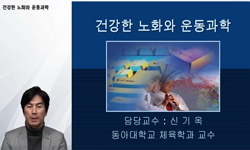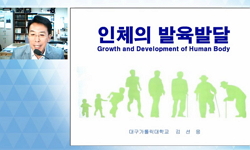여러 연구를 통해 자기가치확인(SA)이 의도와 행동변화에 긍정적 영향을 미치는 것으로 나타났지만, 자기가치 확인이 의도와 행동변화를 유도하는 인지적, 심리적 과정에 대한 연구는 부족...
http://chineseinput.net/에서 pinyin(병음)방식으로 중국어를 변환할 수 있습니다.
변환된 중국어를 복사하여 사용하시면 됩니다.
- 中文 을 입력하시려면 zhongwen을 입력하시고 space를누르시면됩니다.
- 北京 을 입력하시려면 beijing을 입력하시고 space를 누르시면 됩니다.
https://www.riss.kr/link?id=A106256148
- 저자
- 발행기관
- 학술지명
- 권호사항
-
발행연도
2019
-
작성언어
Korean
- 주제어
-
등재정보
KCI등재
-
자료형태
학술저널
-
수록면
671-680(10쪽)
-
KCI 피인용횟수
0
- 제공처
-
0
상세조회 -
0
다운로드
부가정보
국문 초록 (Abstract)
여러 연구를 통해 자기가치확인(SA)이 의도와 행동변화에 긍정적 영향을 미치는 것으로 나타났지만, 자기가치 확인이 의도와 행동변화를 유도하는 인지적, 심리적 과정에 대한 연구는 부족한 실정이다. 본 연구에서는 자기가치확인 과 건강위협정보(HTI)가 SA와 HTI 조작이전의 운동의도(시점 1)와 관련성이 있는지 또는 조작이후 운동의도(시점 2)와 관련성이 있는지를 검증하여 자기가치확인이 행동변화를 유도하는 심리적 과정에 대해 살펴보았다. 신체활동량 이 낮은 여대생 61명을 대상으로 SA와 두 가지 HTI(“꾸준한 신체활동은 70~80대(또는 20~30대)의 치매(또는 유방 암)를 예방.”)에 따라 무작위로 집단을 구분하였다. SA와 HTI 조작 이전의 운동의도(시점 1)를 측정한 후, 1주일 간격 으로 SA와 HTI 조작 이후 운동의도(시점 2)와 신체활동(시점 3)을 각각 측정하였다. 연구결과 유방암보다 치매정보 에서 운동의도(시점 1)가 운동의도(시점 2)를 강화시켰으며, 자기가치확인이 될 수록 운동의도(시점 2)가 신체활동 (시점 3)에 미치는 정적영향력은 높아졌다. 따라서 동일한 시점에서 SA와 HTI조작이 이루어졌지만, HTI는 운동의도 (시점 1)와 SA는 운동의도(시점 2)와 관련성이 존재하는 것으로 나타났다. 마지막으로 SA가 되고 유방암 정보를 받은 참여자에서 운동의도(시점 1)가 운동의도(시점 2)를 매개로 신체활동(시점 2)에 미치는 간접효과가 통계적으로 유의 미하였다.
다국어 초록 (Multilingual Abstract)
Although studies have shown that self-affirmation(SA) effects intention and behavior change positively, studies on cognitive and psychological processes that induce self-affirmation intention and behavior change are insufficient. In this study, we exa...
Although studies have shown that self-affirmation(SA) effects intention and behavior change positively, studies on cognitive and psychological processes that induce self-affirmation intention and behavior change are insufficient. In this study, we examined whether SA and health threatening information(HTI) were related to exercise intention(EI)(T1) before SA or HTI manipulation or to EI(T2) after exercise. A group of 61 female college students with low physical activity were randomly assigned according to SA and two HTI (dementia or breast cancer). We measured EI(T1) before SA and HTI manipulation and measured EI(T 2) after SA and HTI manipulation one week later and physical activity(PA)(T3) one week later. The results showed that EI(T1) strengthened EI(T2) in dementia information than breast cancer and the influence of EI(T2) increased PA(T3) has been increased. Therefore, despite the fact that SA and HTI manipulation were performed at the same time, HTI was associated with EI(T1) and SA with EI(T2). Finally, the indirect effect of EI(T1) on PA(T2) through EI(T2) was statistically significant in participants who received SA and breast cancer information.
목차 (Table of Contents)
- 요약
- Abstract
- Ⅰ. 서론
- Ⅱ. 연구방법
- 1. 연구참여자
- 요약
- Abstract
- Ⅰ. 서론
- Ⅱ. 연구방법
- 1. 연구참여자
- 2. 측정도구
- 3. 연구절차
- 4. 분석방법
- Ⅲ. 결과
- 1. 기초통계분석
- 2. 조작확인
- 3. 조절된 매개효과
- 4. 간접효과 검증
- Ⅳ. 논의
- Ⅴ. 결론 및 제언
- 참고문헌
참고문헌 (Reference)
1 Crocker, J., "Why does writing about important values reduce defensiveness? Self-affirmation and the role of positive other-directed feelings" 19 (19): 740-747, 2008
2 Marcus, B. H., "Using the stage of change model to increase the adoption of physical activity among community participants" 6 (6): 424-429, 1992
3 Courneya, K. S., "Understanding readiness for regular physical activity in older individuals : An application of the theory of planned behavior" 14 (14): 80-87, 1995
4 Hall, P. A., "Time perspective theory; review, research and application" Springer 339-352, 2015
5 Logel, C., "The role of the self in physical health : Testing the effect of a values-affirmation intervention on weight loss" 23 (23): 53-55, 2012
6 Sherman, D. K., "The psychology of self‐defense : Self‐affirmation theory" 38 : 183-242, 2006
7 Epton, T., "The impact of self-affirmation on health-behavior change : A meta-analysis" 34 (34): 187-196, 2015
8 Liberman, N., "The effect of level of construal on the temporal distance of activity enactment" 43 (43): 143-149, 2007
9 Trope, Y., "Temporal construal" 110 (110): 403-421, 2003
10 Harris, P. R., "Self-affirmation reduces smokers'defensiveness to graphic on-pack cigarette warning labels" 26 (26): 437-446, 2007
1 Crocker, J., "Why does writing about important values reduce defensiveness? Self-affirmation and the role of positive other-directed feelings" 19 (19): 740-747, 2008
2 Marcus, B. H., "Using the stage of change model to increase the adoption of physical activity among community participants" 6 (6): 424-429, 1992
3 Courneya, K. S., "Understanding readiness for regular physical activity in older individuals : An application of the theory of planned behavior" 14 (14): 80-87, 1995
4 Hall, P. A., "Time perspective theory; review, research and application" Springer 339-352, 2015
5 Logel, C., "The role of the self in physical health : Testing the effect of a values-affirmation intervention on weight loss" 23 (23): 53-55, 2012
6 Sherman, D. K., "The psychology of self‐defense : Self‐affirmation theory" 38 : 183-242, 2006
7 Epton, T., "The impact of self-affirmation on health-behavior change : A meta-analysis" 34 (34): 187-196, 2015
8 Liberman, N., "The effect of level of construal on the temporal distance of activity enactment" 43 (43): 143-149, 2007
9 Trope, Y., "Temporal construal" 110 (110): 403-421, 2003
10 Harris, P. R., "Self-affirmation reduces smokers'defensiveness to graphic on-pack cigarette warning labels" 26 (26): 437-446, 2007
11 Cooke, R., "Self-affirmation promotes physical activity" 36 (36): 217-223, 2014
12 Armitage, C. J., "Self-affirmation increases acceptance of health-risk information among UK adult smokers with low socioeconomic status" 22 (22): 88-95, 2008
13 Sweeney, A. M., "Self-affirmation impacts behavioral intentions but not preferences for delayed outcomes" 67 : 34-42, 2016
14 Harris, P. R., "Self-affirmation and the biased processing of threatening healthrisk information" 31 (31): 1250-1263, 2005
15 Sweeney, A. M., "Self-affirmation and responses to health messages : A meta-analysis on intentions and behavior" 34 (34): 149-159, 2015
16 Fein, S., "Prejudice as self-image maintenance : Affirming the self through derogating others" 73 (73): 31-44, 1997
17 Schimel, J., "Not all self-affirmations were created equal: The cognitive and social benefits of affirming the intrinsic (vs. extrinsic) self" 22 (22): 75-99, 2004
18 Klein, W. M., "Maintaining positive self-evaluations : Reducing attention to diagnostic but unfavorable social comparison information when general selfregard is salient" 25 (25): 23-40, 2001
19 Van Koningsbruggen, G. M., "How self-affirmation reduces defensive processing of threatening health information : evidence at the implicit level" 28 (28): 563-568, 2009
20 Schneider, S., "Does the effect go up in smoke? A randomized controlled trial of pictorial warnings on cigarette packaging" 86 (86): 77-83, 2012
21 Sherman, D. A., "Do messages about health risks threaten the self? Increasing the acceptance of threatening health messages via selfaffirmation" 26 (26): 1046-1058, 2000
22 Pietersma, S., "Do behavioural health intentions engender health behaviour change? A study on the moderating role of self ‐affirmation on actual fruit intake versus vegetable intake" 16 (16): 815-827, 2011
23 Napper, L., "Developing and testing a self-affirmation manipulation" 8 (8): 45-62, 2009
24 Trope, Y., "Construal-level theory of psychological distance" 117 (117): 440-463, 2010
25 Steele, C. M., "Advances in experimental social psychology, Vol. 21. Social psychological studies of the self: Perspectives and programs" Academic Press 261-302, 1988
동일학술지(권/호) 다른 논문
-
빅데이터 분석을 활용한 스포테인먼트 현황 및 전략 분석 연구
- 한국스포츠학회
- 이재문
- 2019
- KCI등재
-
생활체육 지도자의 멘토링 기능이 참여자들의 자기관리 및 자아실현에 미치는 영향
- 한국스포츠학회
- 석혁기
- 2019
- KCI등재
-
대학 교양체육 참여자들의 심리적 웰빙이 여가태도 및 여가만족에 미치는 영향
- 한국스포츠학회
- 김태형
- 2019
- KCI등재
-
대학 스포츠 동아리 참여자의 재미요인과 활동열정, 운동지속과의 관계
- 한국스포츠학회
- 김민현
- 2019
- KCI등재
분석정보
인용정보 인용지수 설명보기
학술지 이력
| 연월일 | 이력구분 | 이력상세 | 등재구분 |
|---|---|---|---|
| 2027 | 평가예정 | 재인증평가 신청대상 (재인증) | |
| 2021-01-01 | 평가 | 등재학술지 유지 (재인증) |  |
| 2018-01-01 | 평가 | 등재학술지 선정 (계속평가) |  |
| 2016-01-01 | 평가 | 등재후보학술지 선정 (신규평가) |  |
| 2015-12-01 | 평가 | 등재후보 탈락 (기타) | |
| 2013-01-01 | 평가 | 등재후보 1차 FAIL (등재후보1차) |  |
| 2012-01-01 | 평가 | 등재후보학술지 유지 (기타) |  |
| 2010-01-01 | 평가 | 등재후보학술지 선정 (신규평가) |  |
학술지 인용정보
| 기준연도 | WOS-KCI 통합IF(2년) | KCIF(2년) | KCIF(3년) |
|---|---|---|---|
| 2016 | 0.95 | 0.95 | 0.86 |
| KCIF(4년) | KCIF(5년) | 중심성지수(3년) | 즉시성지수 |
| 0.77 | 0.72 | 0.665 | 0.34 |





 eArticle
eArticle






